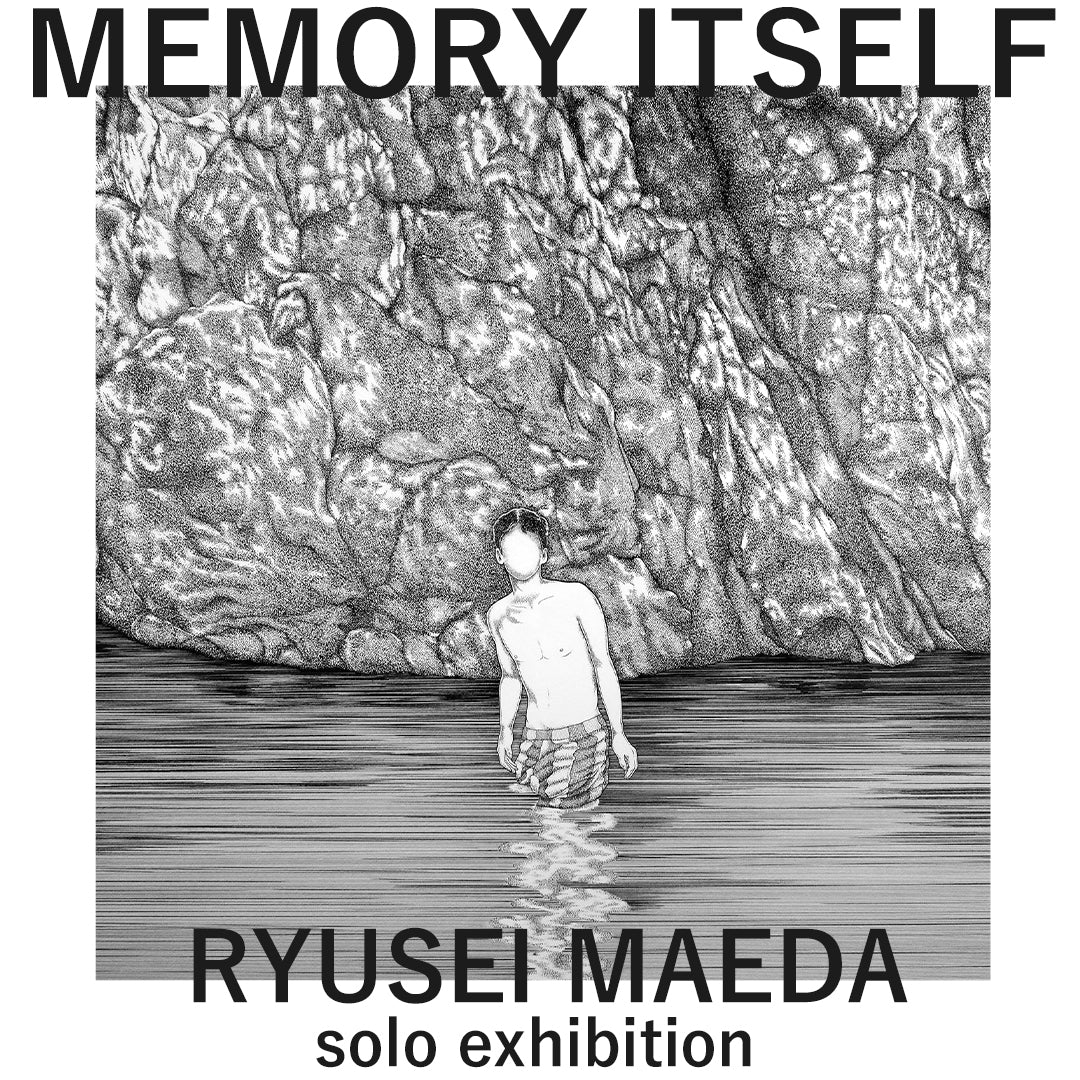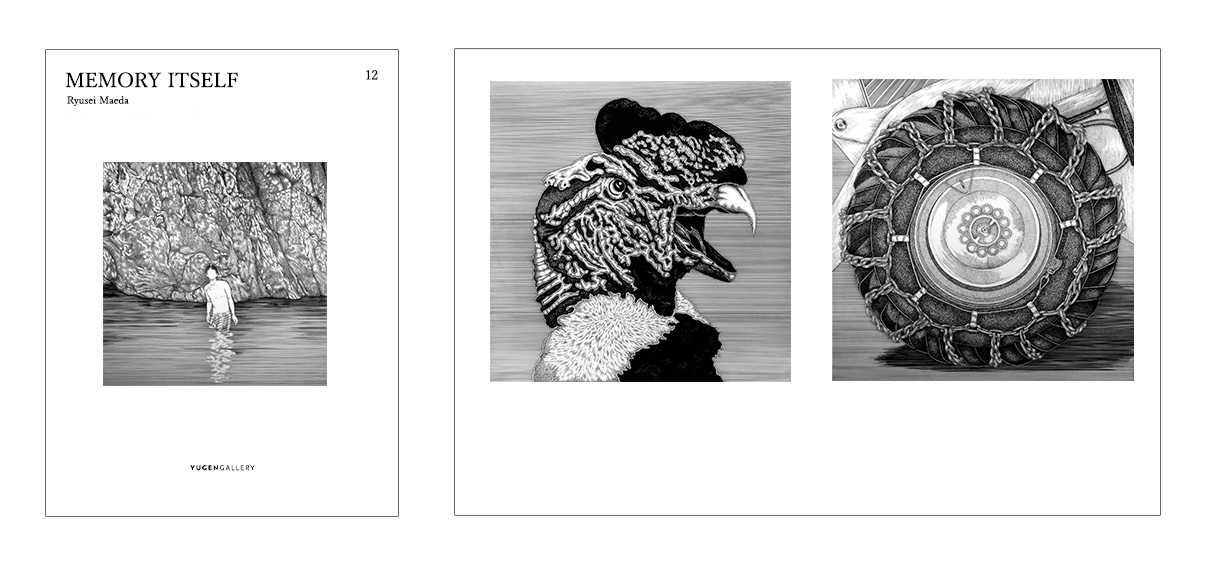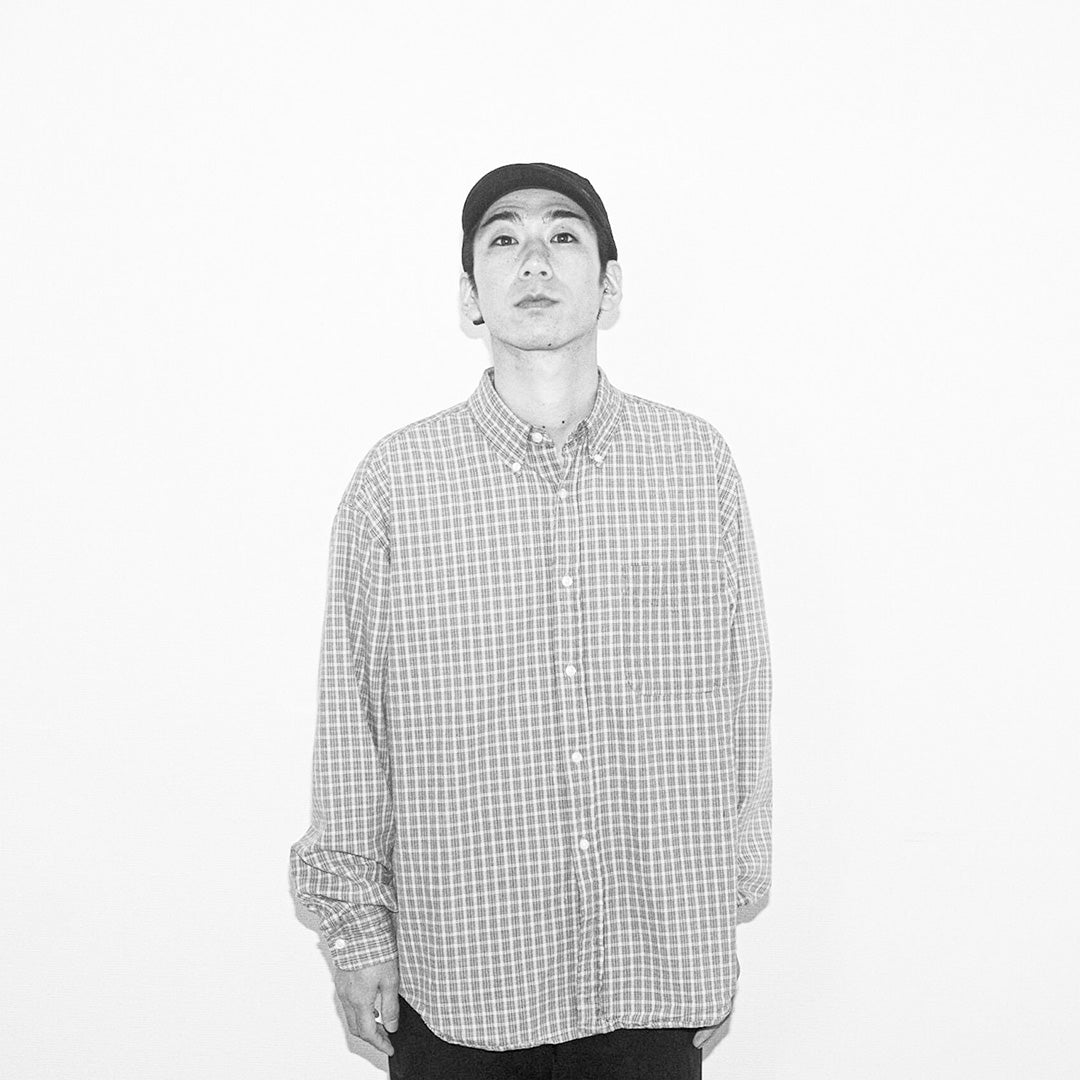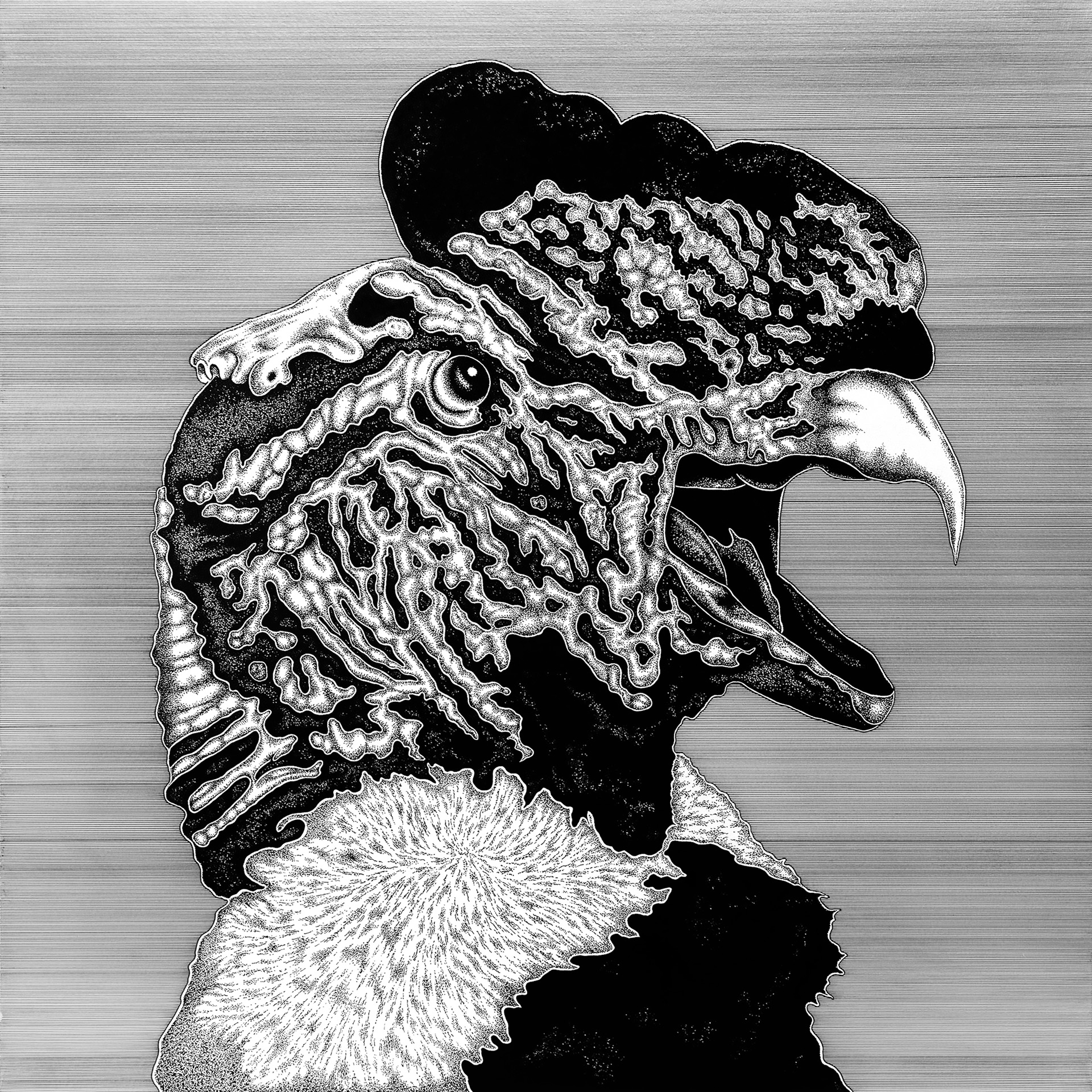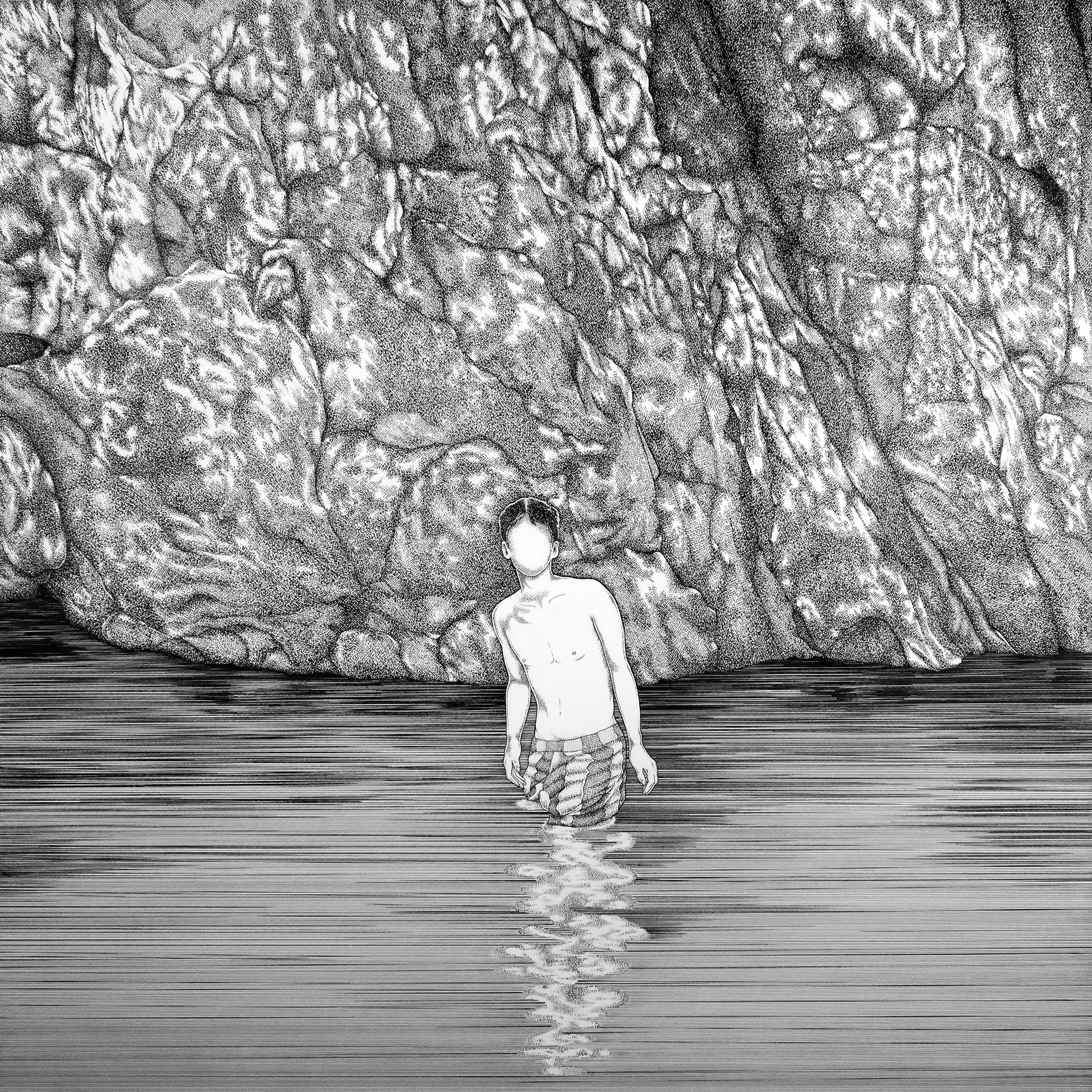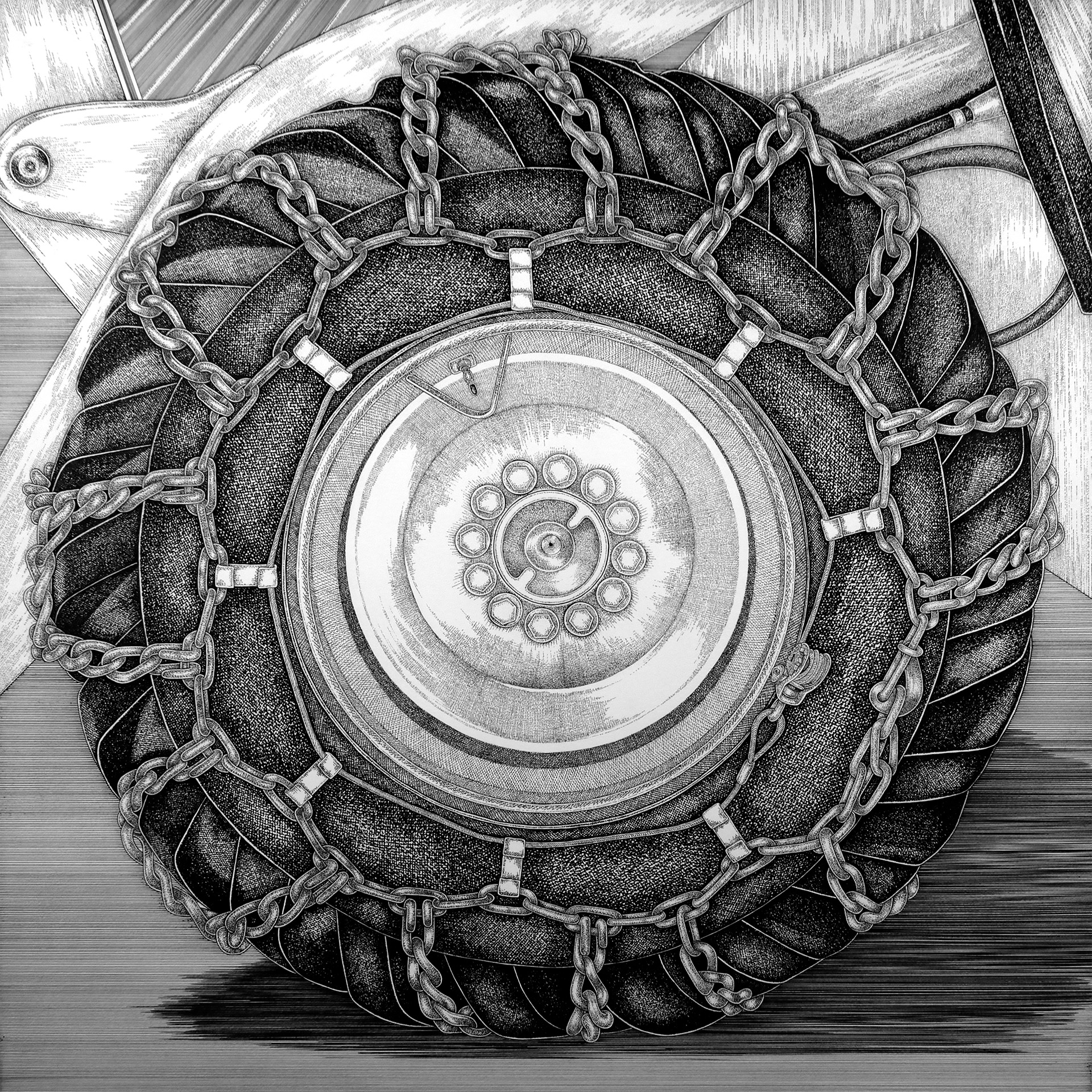Paintings that evoke emotions
Characters with indescribable expressions drawn in a cartoon-like style, emptiness-inducing cityscapes, and obsessive hand-drawn lines and pointillism in the background. Maeda Ryusei, who creates monochrome two-dimensional works that combine multi-dimensional elements, will be showcasing about 40 pieces he has drawn over the past three years since 2020 in "MEMORY ITSELF."
"When I select interesting and pleasing images from the photos I take every day, without even thinking about turning them into artworks, scenes that I thought were unrelated start to synchronize and react with each other. I'm interested in drawing these scenes without any thought in mind."
Born in Hyogo Prefecture in 1993. Inspired by music CD jackets and clothing graphics, he aspired to become an artist. His favorite artists include Raymond Pettibon, Daniel Johnston, Barry McGee, Mike Kelley, Francesco Clemente, and Shinro Ohtake, and he says he was particularly impressed by the work of photographer Wolfgang Tillmans.
He majored in visual design and film at the Kyoto Seika University Faculty of Design. While he was a student, he formed the band Valley Boys, which performed at the Fuji Rock Festival's ROOKIE A GO-GO, and was also a member of SUCC (Seika University Culture Club), a student art project group supervised by Hiroshi Fujiwara, who was a visiting professor at the school at the time. After graduating, he has been based in Kyoto, focusing on drawing works and engaging in creative activities that are not bound by genre.
A landscape made up of various emotions
He has decided to relocate his base of operations to Tokyo in 2022. This exhibition marks the first step in that direction, and the theme for it is memory.
"The paintings I made during the gap after I quit music, the COVID-19 pandemic, and my time in Tokyo certainly bring to mind the scenes from those times. I feel that my paintings are what best remember my emotions, both good and bad. I want to make this exhibition the culmination of three years of changes in my environment and feelings."
Maeda says that by drawing, he can connect with society, but also distance himself from it. The works he creates are like knitting, which can only be understood after he has continued to move his hands and it begins to take on a shape. Patterns emerge where threads of various memories and emotions intersect.
"When I look at pictures I painted in the spring, I remember the scenery and scent of wintersweets in bloom. I can't put into words the things I remember from scenery, photographs, smells and sounds, but I feel like I absolutely have to remember them. It's not that I want to go back to those times, but I don't want to forget what I was thinking and the emotions I had at the time."
He instantly zooms in and out to everyday and extraordinary scenes, such as a bee landing on a flower, a praying mantis standing on a rocky mountain, and a building towering over a desert region, then cuts in abstract paintings. Maeda's work, with its multi-layered composition, shows the influence of the manga he was familiar with as a child and the installations of photographers such as Tillmans.
Capturing the feeling of being alive
His subjects are photographs he takes himself every day. In the past, he was inspired by movie scenes, newspapers, old books, etc., since he loved movies. However, he now expands his imagination on the "realest things" he feels first-hand, such as the spaces he finds himself in and the events that occur there.
"The world moves at a fast pace, and with efficient methods, new expressions are constantly emerging. I personally find human passion, or rather physical things, more interesting, so I feel like I'm battling that. I want to face head-on the things that I find interesting, the emotions that I can't put into words, and the intuitive things, without being swept away by the times."
Maeda's work depicts the details of everyday life that we usually overlook, and other-dimensional spaces that we jump from there to, using super-realistic techniques, and in these works, we can dryly bring to light the various emotions and memories we have woven together in this age of indescribable anxiety and chaos. What is presented here as hope is handicrafts as art.
He admits that it is "honestly tiring" to spend time and effort every day drawing lines and dots with his own hands. However, he believes that there is something that can only be conveyed by facing deep within himself and continuing to draw.
Maeda's monologue involves him meticulously copying his memories onto paper with an ink pen in hand. In the present day, when the sense of reality of life is fading, art and human memory are truly physical things.

